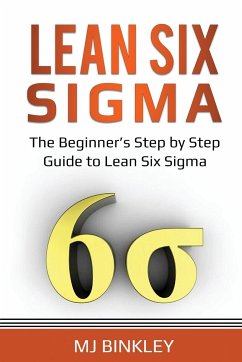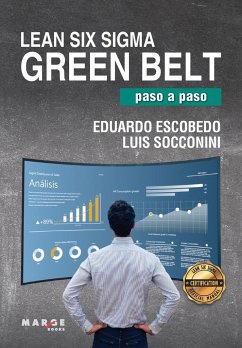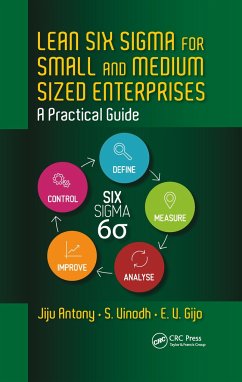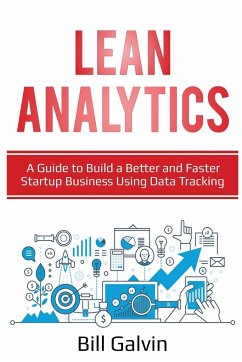
SigmaXL® and Lean Six Sigma
A Guide to Improve Business Performance Metrics
Versandkostenfrei!
Versandfertig in 1-2 Wochen
17,99 €
inkl. MwSt.

PAYBACK Punkte
9 °P sammeln!
This book:Shows the execution of SigmaXL software functions in a detailed Lean Six Sigma Define-Measure-Analyze-Improve-Control (DMAIC) roadmap to enhance the Y response for process improvement projects Shows use of a free software app for response-metric tracking that provides insight not possible with traditional metric reporting techniques Utilizes over 50 datasets to illustrate Y-response tracking from a process-output perspective and Y=f(X) analyses Discusses over 200 figures that illustrate software inputs and outputs Provides a clickable Lean Six Sigma Define-Measure-Analyze-Improve-Con...
This book:Shows the execution of SigmaXL software functions in a detailed Lean Six Sigma Define-Measure-Analyze-Improve-Control (DMAIC) roadmap to enhance the Y response for process improvement projects Shows use of a free software app for response-metric tracking that provides insight not possible with traditional metric reporting techniques Utilizes over 50 datasets to illustrate Y-response tracking from a process-output perspective and Y=f(X) analyses Discusses over 200 figures that illustrate software inputs and outputs Provides a clickable Lean Six Sigma Define-Measure-Analyze-Improve-Control (DMAIC) process-improvement roadmap that integrates the application of Lean and Six Sigma tools so that the right tool is used at the right time when undertaking process improvement efforts Shows a methodology for Lean Six Sigma improvement project selection so that the organization's big-picture benefits from the project¿s completion Provides a method to statistically show and quantify at the 30,000-foot-level the benefits of process improvement efforts Offers a business process improvement system that goes beyond traditional Lean Six Sigma and the Balanced Scorecard Explains a method for executing and enhancing digital transformation efforts in an organization This book provides direction on how organizations can resolve issues that commonly occur with:Traditional control charts and process capability reporting techniques AQL testing and reporting Lean Six Sigma deployments This book provides direction on how organizations can benefit from the wise application of:Statistical and non-statistical techniques. Design of Experiments (DOE) in both manufacturing and transactional processes. This book provides a comprehensive 9-step system that CEOs, presidents, general managers, executives, managers, leaders, practitioners, and others can use to resolve elephant-in-the-room management issues such as:Business goals not being met Scorecards leading to harmful, if not destructive, behaviors Persistent day-to-day firefighting problems Business strategies that are very generic and difficult to translate into organizational work environments Lean events and other improvement projects can consume many resources but often do not offer a quantifiable benefit to the business as a whole Lean Six Sigma process improvement deployments that have improvement projects, which are either not completed in a timely fashion or which make substantial financial claims that are questionable This book describes the application and how to use the following tools in SigmaXL software within a Lean Six Sigma Define-Measure-Analyze-Improve-Control (DMAIC) roadmapTime-series plot Histogram Dot plot Descriptive statistics Pareto chart Probability plot X-bar and R control chart P-chart Process capability indices 30,000-foot-level reports Cause-and-effect diagram Visualization of data Multi-vari chart Hypothesis testing Inferences: continuous data Inferrences: attribute data Comparing two samples Demonstration of process metric output response improvement Variance components Correlation Simple regression Residuals Single factor ANOVA ANOM Two factor ANOVA Multiple regression Binary Logistic regression General Linear Model (GLM) Design of Experiments (DOE) Response surface methodology (RSM) Control phase - maintain the gain This book offers a methodology to implement Deming's management philosophy, ISO 9000, Baldrige criteria, and Shingo Prize criteria all at once.














